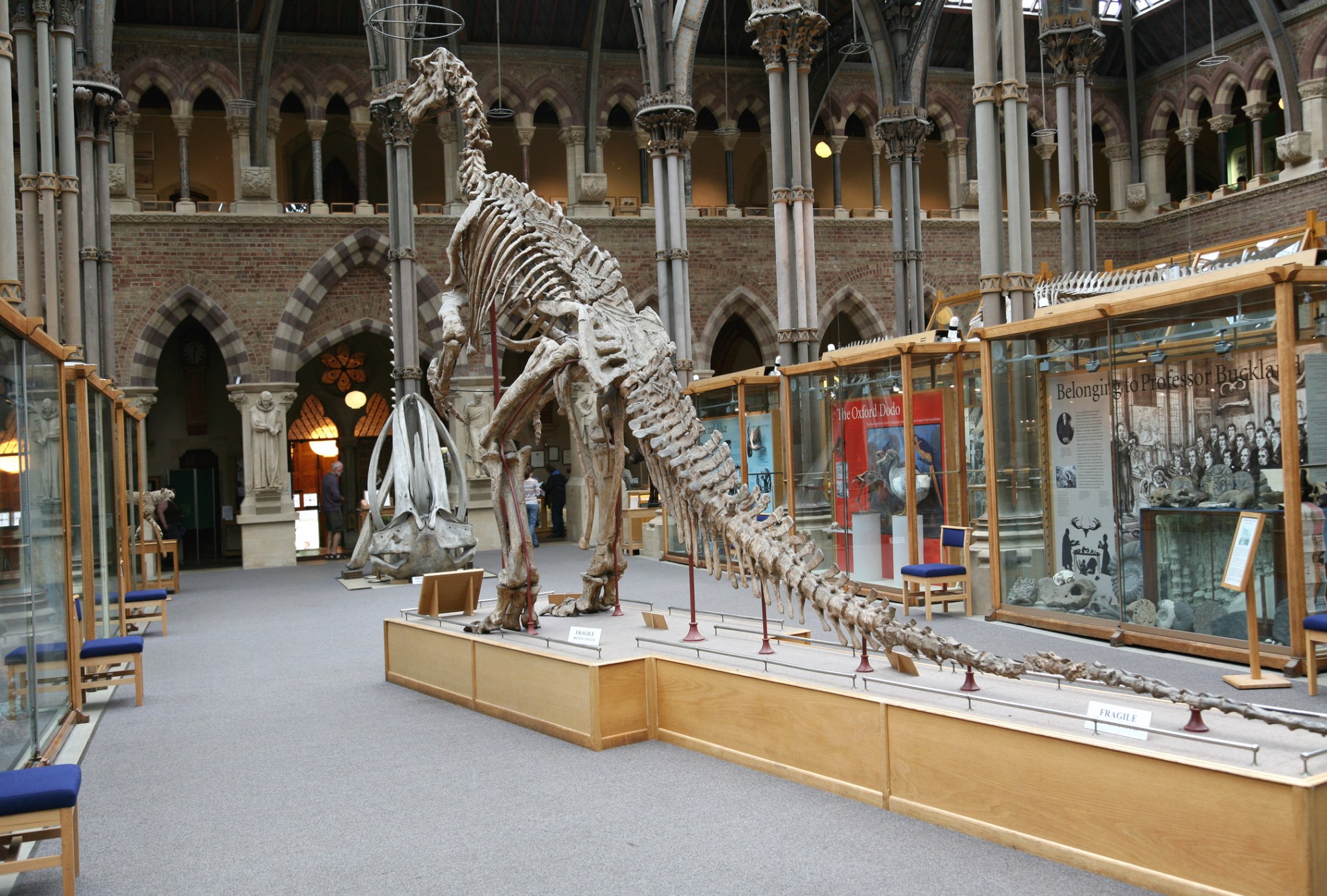Museums

Museums
Oxford proudly announces itself to be the ‘City of Learning and Culture’, and this isn’t just limited to the university. Oxford contains seven University of Oxford museums and four independent museums. All catering to their specific niche, an Oxford museum will have something for you no matter your interests.
Ashmolean Museum
The Ashmolean Museum of Art and Archaeology is the best-known museum in Oxford. It is the second oldest university museum in the world after the Kunstmuseum Basel. Built from Elias Ashmole’s cabinet of curiosities (which he gifted to the University in 1677) and moved to its current location in 1894, it is free to enter and was the first public museum in Britain. The museum’s main collection contains a wide array of archaeological artefacts. The museum has a particularly strong focus on Ancient Egypt and Sudan and hosts the Griffith Institute for the Advancement of Egyptology. In the basement is a large selection of coins from the Anglo-Saxon Crondall Hoard, catering to all your numismatic needs.
It’s art collection boasts particularly fine Pre-Raphaelite paintings and several works of Turner including Rive des Esclavons. Other artworks include drawings from Michaelangelo, Raphael, and Leonardo da Vinci and paintings from Pablo Picasso, Paul Cézanne, and John Constable.
Located on Beaumont street, admission to the main collection is free, though special collections may incur a charge.
Bate Collection of Musical Instruments
The Bate Collection of Musical Instruments is housed in the University of Oxford’s Faculty of Music on St. Aldates. It displays classical instruments, mainly western in origin and from the Middle Ages and beyond. The collection is named for Phillip Bate, who gave his collection to the University of Oxford in 1968 with the bequest that it be used for teaching purposes. The museum is open to the public and the instruments are available for academic study by appointment.
Christchurch Picture Gallery
The Christchurch Picture Gallery is one of the most important private collections in the UK. It is especially strong on Italian artwork, containing paintings from Annibale Carracci, Sano di Pietro, and Salvator Rosa. It also contains drawings from Leonardo da Vinci, Raphael, Michelangelo, Albrecht Dürer and Peter Paul Rubens.
A recent theft rocked the gallery in March 2020 when Annibale carracci’s A Boy Drinking, Salvator Rosa’s A Rocky Coast, and Anthony van Dyck’s A Soldier on Horseback were taken from the museum. They are yet to be recovered.
Although the gallery is housed within Christchurch College, visitors who wish to only visit the gallery need not pay the entrance fee for the college. Simply enter through Canterbury Gate off Oriel Square. Admission (which is independent of admission to the rest of the college) is £5 but is free to members of the university and National Art Pass holders.
Modern Art Oxford
The first independent gallery to adorn this list is Modern Art Oxford. Originally called the Museum of Modern Art, Oxford, the site adopted its current name in 2002. The museum lacks any permanent exhibitions and dedicates itself to progressive artwork which promotes diversity and internationalism. Modern Art Oxford regularly hosts events which encourage public engagement with creativity and the arts, so if you are a budding artist or just fancy trying your hand at something artistic, give it a visit!
Located on Pembroke Street, admission to the exhibitions is free.
Museum of the History of Science
The Museum of the History of Science sits proudly next to the Sheldonian Theatre on Broad Street. It was built in 1683 to house Elias Ashmole’s collection and is sometimes referred to as the “Old Ashmolean Museum” in recognition of its history. It is the oldest surviving purpose-built museum in the world.
The museum showcases the history of science from antiquity to the 20th century and contains a wide array of scientific instruments. It has a particularly fine exhibit on the development of mechanical clocks. But the crowning glory of the museum is an uncleaned chalk board from a series of lectures given by Albert Einstein in 1931. The blackboard features equations supporting Einstein’s lectures on relativity, cosmology, and unified field theory.
The museum is open every day except Monday and admission is free.
Oxford Castle – Unlocked
Located on New Road, Oxford Castle has a long and influential history. Built by the Normans in the Middle Ages, it was instrumental in supplying King Stephen’s army during the 12th century conflict known as The Anarchy. Most of the castle was destroyed during the English Civil War and the remainder of a castle served as a local prison from the 18th century, becoming HM Prison Oxford in 1876. It remained a prison until 1996. Today, it is a rather nice hotel called Mal Maison and the remainder of a castle is a museum!
Admission is via guided tour only. Prices range between £9.45 for a child and £14.45 for an adult.
Oxford Museum of Natural History
The Oxford Museum of Natural History was established in 1860 as a place to showcase scientific studies from across Oxford. It is dedicated to demonstrating fieldwork and was the site of the first public demonstration of wireless radio in 1894.
Megalosaurus bucklandi, the world’s first scientifically described dinosaur, and the only soft tissue remains of a dodo are both housed in the museum. The museum also contains a 1651 painting of dodo by Jan Savery which is said to have inspired Lewis Carroll to include a dodo character in Alice in Wonderland.
The museum is located on Parks Road and is free to visit.
Pitt Rivers Museum
The Pitt Rivers Museum holds as special place in my heart, as it does for any Oxford anthropologist. Built from the collection of Augustus Henry Lane-Fox Pitt-Rivers (which is quite the name!), the museum is the spiritual home of anthropology. In addition to the condition that a permanent lecturer in anthropology should be appointed, part of Pitt-Rivers’ bequest was that the building housing his collection should serve no other purpose, which is why, although attached to the Museum of Natural History, it remains distinct and with a separate entrance.
The collection houses the anthropological and archaeological collections (more than 500,000 items) of the University of Oxford. Pitt-Rivers intended the collection to demonstrate an evolutionary progression from simple to complex cultures, an approach which has long since been abandoned by mainstream archaeology.
Today, the museum works hard to decolonise its collection. Many of the exhibits containing human remains have been removed (including the shrunken heads which had been on display since 1940) and the labels have been adjusted to reflect the voices of the indigenous people’s whose cultures the artefacts represent.
Honourable Mention – The Botanic Gardens
Though not a museum in a conventional sense, the Botanic Gardens is well worth a visit. Opened 400 years ago in 1621, the Oxford Botanic Gardens are the UK’s oldest botanic gardens. It is committed to educating people about the importance of plants, to help conserve plants around the world, and to support research and teaching within the University of Oxford. Its glass houses recreate microclimates around the world to house rare plants from all over the world.
